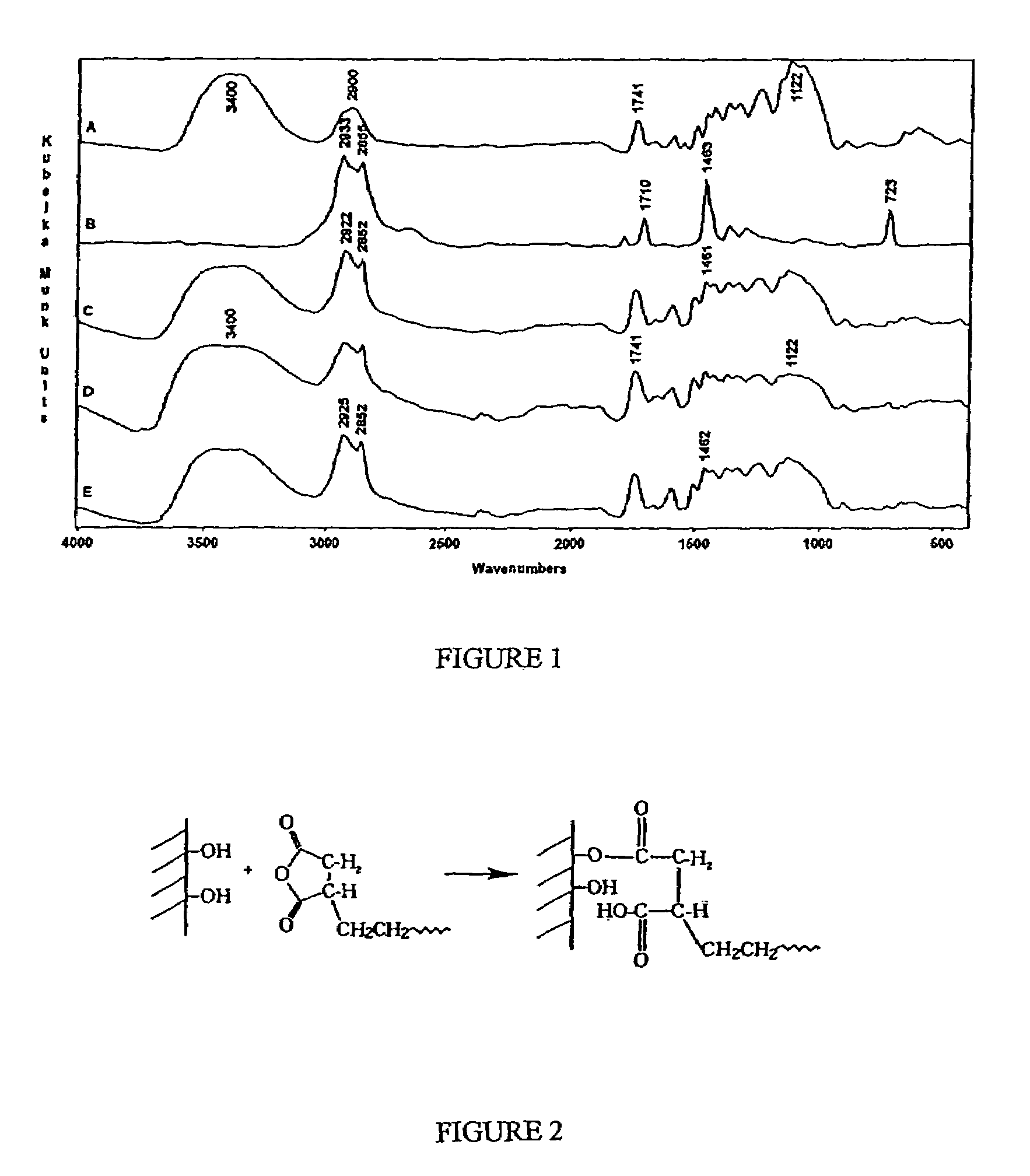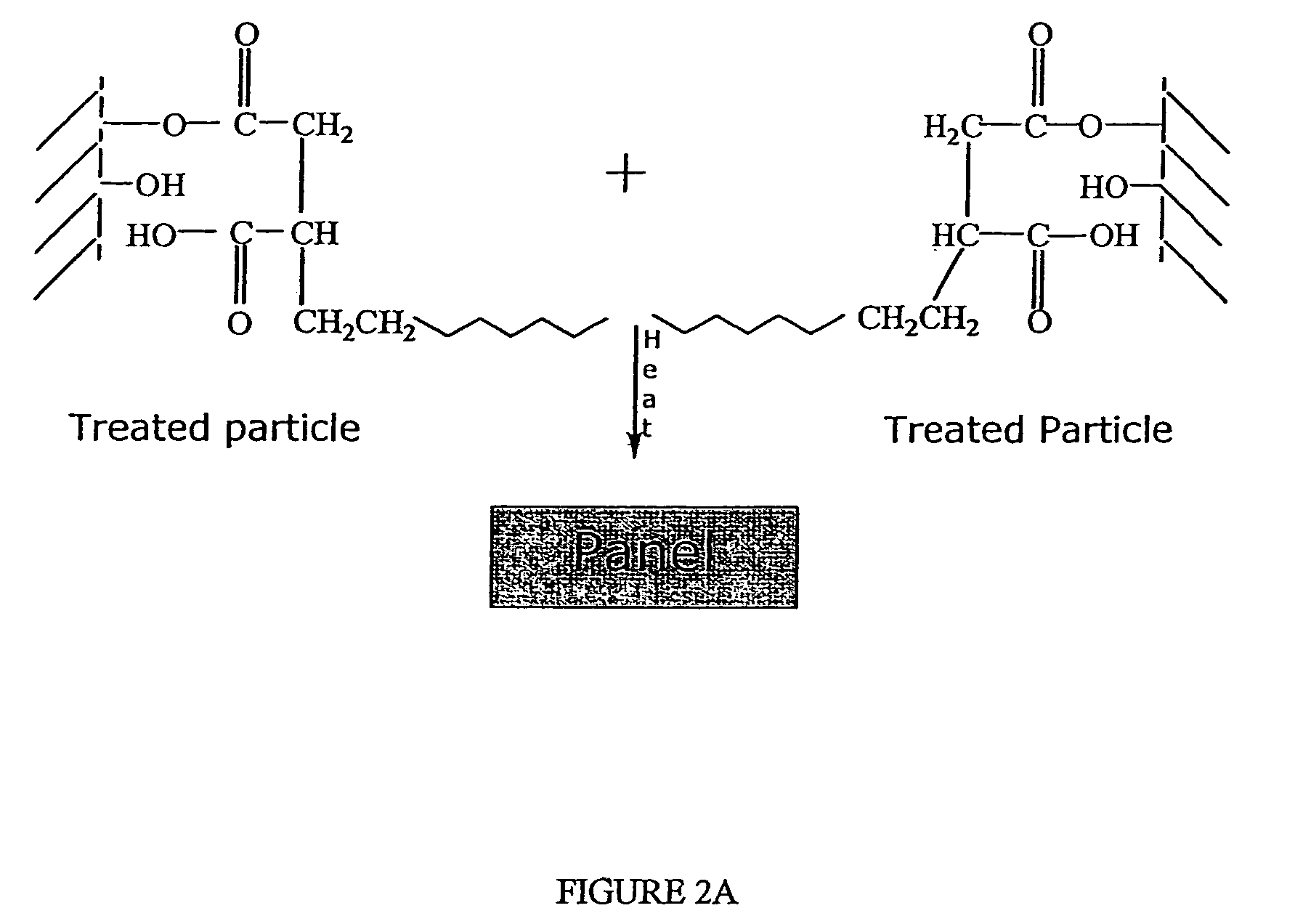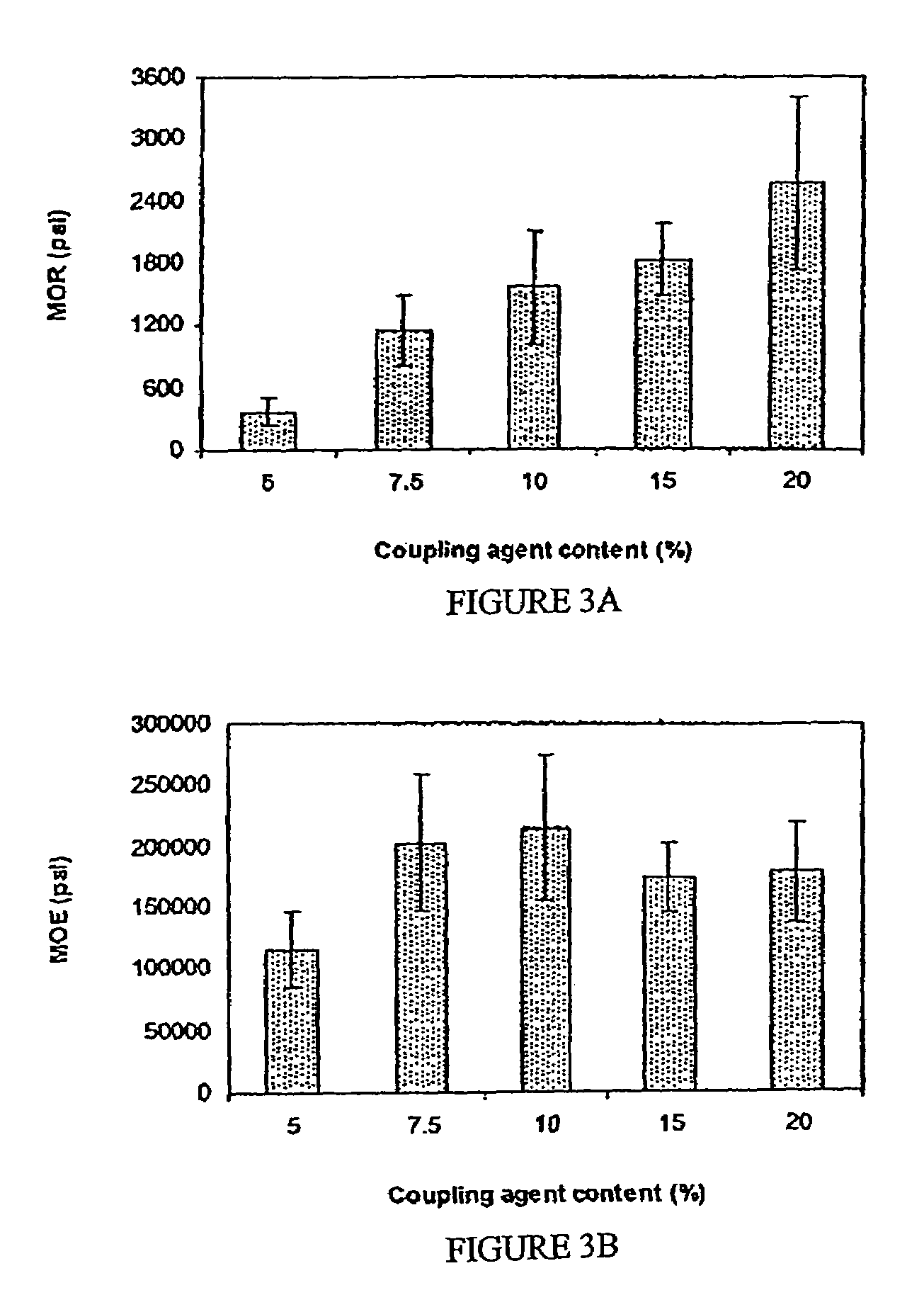Process for the preparation of maleated polyolefin modified wood particles in composites and products
a technology of modified wood particles and composites, which is applied in the field of preparation of maleated polyolefin modified wood particles in composites and products, can solve the problems of inability to remove organic solvents, and inability to meet the requirements of abrasive treatment,
- Summary
- Abstract
- Description
- Claims
- Application Information
AI Technical Summary
Benefits of technology
Problems solved by technology
Method used
Image
Examples
example 1
Experimental
Materials
[0043]Maple wood flour of 425 micron (40-mesh) and 150 micron (100-mesh) size were supplied by American Wood Fibers (Schofield, Wis.)) and were used as particles. The 150 micron particles were used for the analytical work because the diffuse reflectance IR technique required very small particles to minimize the effects of scattering and specular reflectance in the samples. However, these small particles were difficult to feed into the extruder. Since panel manufacturing required a large quantity of modified particles, larger (425 micron) particles, which were easier to process, were used in panel manufacturing and mechanical property testing. Hydrated zinc acetate, the catalyst, and xylene (99.9%, ACS Grade), the solvent used for Soxhlet extraction, were obtained from Baker Analytical Reagents (JT Baker Co., Phillipsburg, N.J.). Maleated polyethylene (PMG-2010) supplied by Eastman Chemical Co. (Kingsport, Tenn.) was used as the coupling agent. The wood particles...
examples 2 to 10
[0059]The following Examples 2 to 10 are experiments in forming the composites of the present invention.
Experimental
Materials
[0060]Maleated polyethylene was used as coupling agents. Hydrated zinc acetate (ZnAc22H2O) was used as a catalyst for esterification reaction. Maple wood flour of 425 micron (40 mesh size) was used as wood particles.
Compounding and Reactive Extrusion of Wood Fibers
[0061]Before extruding, dried wood, coupling agent and catalyst were dry-blended in a high intensity turbine mixer for 5 minutes. The coupling agent contents varied from 5 to 20 wt. % while the catalyst addition level was fixed at 1 wt. % of the total weight of the panel. The remainder was wood flour.
[0062]Unless otherwise mentioned, after blending, the compounded mixtures were extruded through a 32 mm conical co-rotating twin-screw extruder with a L / D ratio of 13:1 driven by 7.5 hp Intelli-Torque Plasti-Corder Torque Rheometer® (C.W. Brabender instruments, Inc.) for surface modification of wood. The...
example 2
Experimental
Materials
[0068]Materials used were the same as in Example 1, except that four different maleated polypropylene (MAPP) coupling agents from Eastman Chemical Co., (Kingsport, Tenn.) with different molecular weights (MW) were used instead of the MAPE. The coupling agents were E-43 (MW 11,200), G-3216 (MW 39,000), G-3015 (MW 47,000) and G-3003 (MW 52,000). The G-3216 is a polyethylene / polypropylene copolymer.
Reactive Extrusion of Wood Particles
[0069]Reactive extrusion was carried out as described in Example 1, except the extruder barrel temperature was held at 165° C., and the rotational speed of the screws was held at 60 rpm. All batches were prepared with 20% coupling agent, as in Table 1 of Example 1.
Panel Manufacturing and Property Testing
[0070]Panels were manufactured and tested as described in Example 1, except that some panels were prepared by pressing the mixed particles without doing the reactive extrusion step (unextruded panels).
Results and Discussion
[0071]Mechani...
PUM
 Login to View More
Login to View More Abstract
Description
Claims
Application Information
 Login to View More
Login to View More - R&D
- Intellectual Property
- Life Sciences
- Materials
- Tech Scout
- Unparalleled Data Quality
- Higher Quality Content
- 60% Fewer Hallucinations
Browse by: Latest US Patents, China's latest patents, Technical Efficacy Thesaurus, Application Domain, Technology Topic, Popular Technical Reports.
© 2025 PatSnap. All rights reserved.Legal|Privacy policy|Modern Slavery Act Transparency Statement|Sitemap|About US| Contact US: help@patsnap.com



